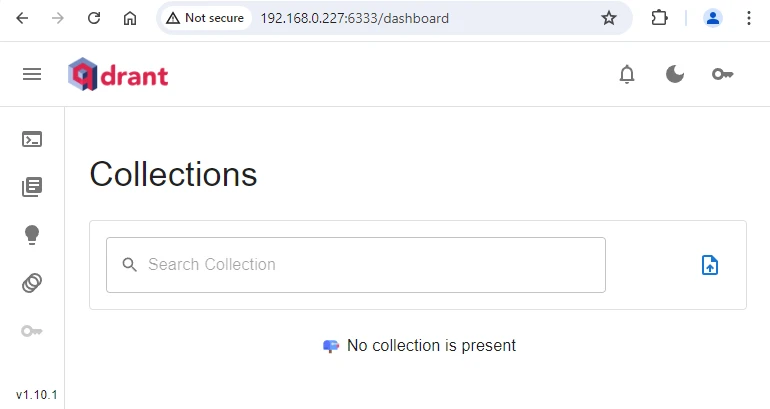Qdrant is an open-source vector database and similarity search engine. It is designed for applications that require high-performance vector search, such as recommendation systems, image search, text search, and more.
This tutorial explains how to install Qdrant inside a Docker container on Linux. Commands have been tested on Ubuntu.
Prepare environment
Make sure you have installed Docker in your system. If you are using Ubuntu, installation instructions can be found in the post.
Install Qdrant
- Host network
Run the following command to create a container for Qdrant that uses host network:
docker run -d --name=qdrant --restart=always --network=host \
-v /opt/qdrant/data:/qdrant/storage \
qdrant/qdrant- User-defined bridge network
User-defined bridge network can be used for listening on different port. By default, the Qdrant service listens on port 6333 for the REST API and dashboard, and on port 6334 for the gRPC API. Both of them can be changed with -p option.
docker network create app-netdocker run -d --name=qdrant --restart=always --network=app-net \
-p 8080:6333 \
-p 8081:6334 \
-v /opt/qdrant/data:/qdrant/storage \
qdrant/qdrantTesting Qdrant
To access the web dashboard, navigate to http://<IP_ADDRESS>:6333/dashboard, replacing <IP_ADDRESS> with the system's IP address.

Uninstall Qdrant
To completely remove Qdrant, remove its container:
docker rm --force qdrantRemove Qdrant image:
docker rmi qdrant/qdrantYou can also remove Qdrant data:
sudo rm -rf /opt/qdrantIf a user-defined bridge network was created, you can delete it as follows:
docker network rm app-net



Leave a Comment
Cancel reply